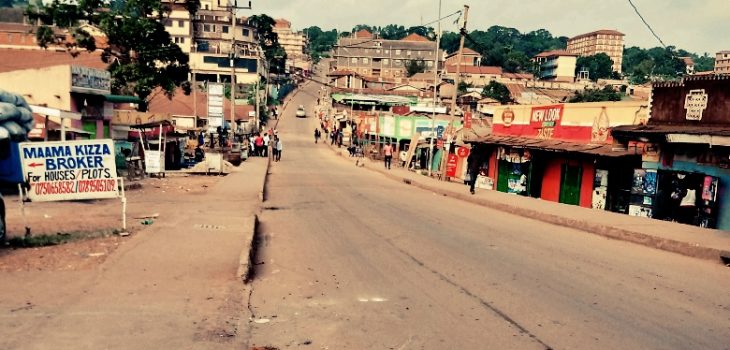By Federica Margini, Anooj Pattnaik, Angellah Nakyanzi (authors affiliated with ThinkWell)
In this blog series we are giving a voice to practitioners, implementers and policy-makers involved in national COVID-19 responses in low- and middle-income countries. These posts seek to facilitate timely cross- learning by sharing opinions, insights and lessons on the challenges and actions taken by those on the COVID-19 front line.
How countries are responding to the COVID-19 pandemic is not only driven by technical and sociopolitical considerations, but also by their recent histories. Uganda is an example of a country whose government’s response has been greatly informed by their recent battles with Ebola. This influence can be tracked through how they have funded and channeled money for their COVID-19 response through their health system.
The Ugandan Government promptly responded to the introduction of COVID-19 by locking down the country and limiting the cases entering. These measures seem to be successful in limiting the introduction and spread of the virus. Still, the Government’s health financing response to COVID-19 presents some risks of not being able to fully adapt and respond to the unique threat this virus presents.
There is growing consensus that it is not just the total funding a country devotes to their response that is important, but where those funds go and how they are managed. In Uganda, external and domestic resources were rapidly mobilized to finance the response. Yet, out of a request of UGX 464 billion from the Ministry of Health, only UGX 104 billion was allocated to the health sector. This investment focused on strengthening the specialized end of care, rather than testing and tracing through the primary health care (PHC) system; 41% of the overall health allocation was directed to the procurement of medical equipment for intensive care and emergency units, 21% for case management, 15% for health workers and only 6% to surveillance and laboratories.
Given that before the outbreak there were only 55 ICUs in the country, it would be quite difficult for Uganda to increase its ICU capacity effectively within a few weeks. Preliminary evidence seems to indicate that only 20% of COVID patients require oxygen therapy and ventilation. Uganda’s youthful population may further reduce these proportions, even with highly prevalent diseases like HIV/AIDS and malaria. It may also be true that low utilization of routine services, like those related to reproductive, maternal, newborn, and child health (RMNCH), may result in more deaths than from the virus itself. Thus, balancing investments in highly specialized treatment with those that ensure health workers’ safety, improve testing and tracing, and in routine services may prove to save more lives not only now, but in post-COVID Uganda as well.
Another key challenge was the nature and scope of the Uganda Government’s budgetary allocations. These were formulated using an activity-based approach that was quite prescriptive about the spending modalities. Instead, greater flexibility could have been granted to use these funds in the way that authorities deemed to be best fit to respond to the extremely fluid situation in their jurisdictions caused by COVID-19.
Much of this strategy was from the Ugandan Government’s management of the Ebola outbreaks. However, Ebola presented a very different threat – it spread in a much less dynamic way (e.g. symptomatic transmission, slower proliferation) and demonstrated a much higher case-fatality rate. Hence, it was easier to track down cases and made sense to prioritize treatment. The current, positive response in Uganda could be made even more effective by tailoring to the specific threats COVID-19 presents, while incorporating the key lessons learned from Ebola.
Accordingly, we recommend the following steps the Ugandan Government can take to adapt their response:
- Adapt funding priorities to the characteristics of COVID-19: increase the investment and operational/technical guidance for community-based testing, tracing, and isolation, as well as health workers’ safety (from community health worker to facility).
- Find ways to improve utilization of routine health services, like those related to RMNCH, immunizations, and HIV/AIDS. Experimentation with task shifting or telemedicine could be part of the strategy.
- Make funding and purchasing mechanisms more flexible for local authorities and providers by increasing the non-wage recurrent funding to districts, without developing itemised or activity-based budgets. Concurrently, adapting expenditure tracking mechanisms to ensure a more rapid release of funds (e.g. frontloading funds to regional referral hospitals to ensure liquidity), adjusting expenditure reporting mechanisms (e.g. creating a special code for expenditures related to COVID-19) and introducing proper accountability mechanisms after the allocations have been made.
In this way, the Government of Uganda can move to the next stage of its response: from its effective, highly centralized Ebola-based response that prioritized lockdown and treatment to one that meets this virus in the field to control transmission. This means through strengthened investment in PHC systems that test, trace, and isolate cases and that also ensure pro-poor access of essential services like RMNCH and immunizations. By investing more in its PHC systems and addressing the public financial management (PFM) challenges that are constricting the flexibility of their response, the Ugandan government can clamp down on COVID-19, while at the same time, bolstering its health system to be more resilient to future pandemics, beyond both Ebola and COVID-19.
Image credit: Wikipedia Commons (Empty roads in Uganda due to the Covid crisis that resulted into the lockdown)











